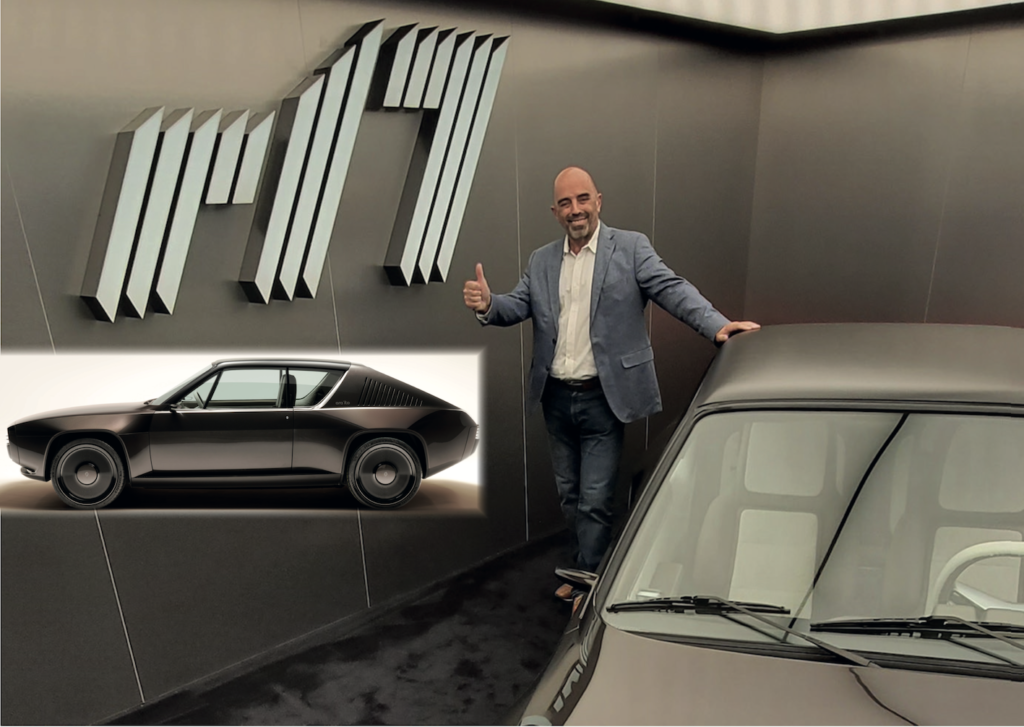
The Renault 17 was designed by the head of Renault styling at the time, Gaston Juchet (1930-2007). We met up with his eldest son, Jean-Michel, to talk about the arrival of the restomod of the coupé born in 1971, redesigned by the designer Ora Ïto, with the help of Renault’s concept car team headed by Sandeep Bhambra.
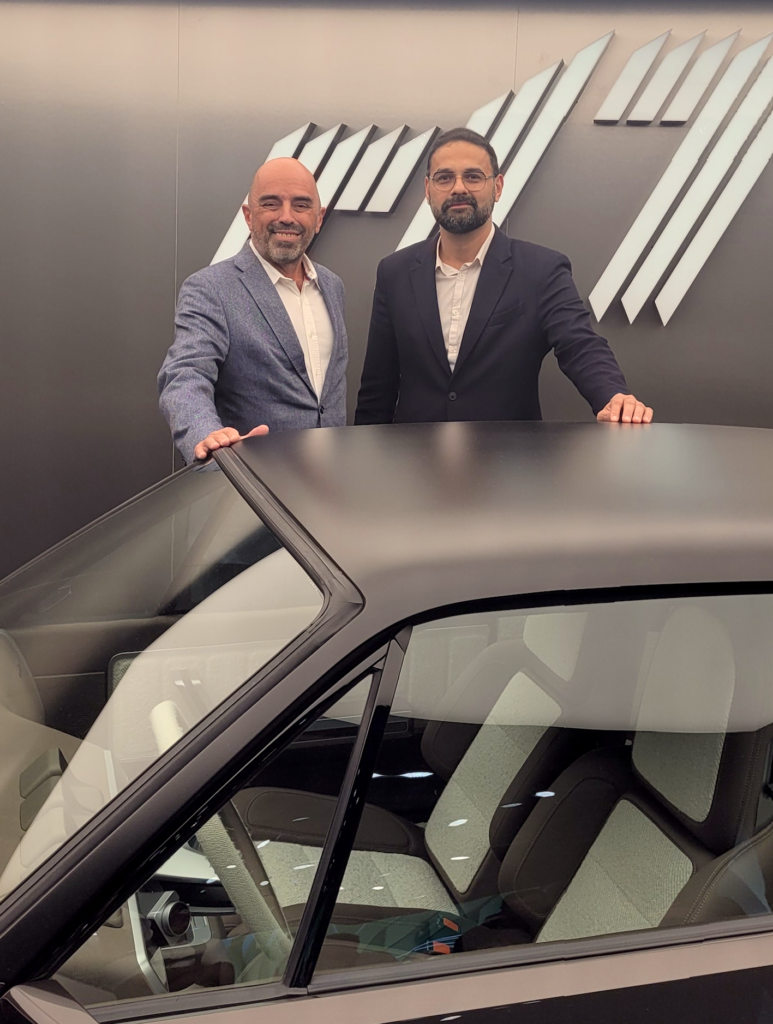
As a direct descendant of Gaston Juchet, were you contacted by Renault about this project, perhaps about the archives?
’No, the family was not contacted, either for the archives or for the project, which I discovered, like you, in the various media.
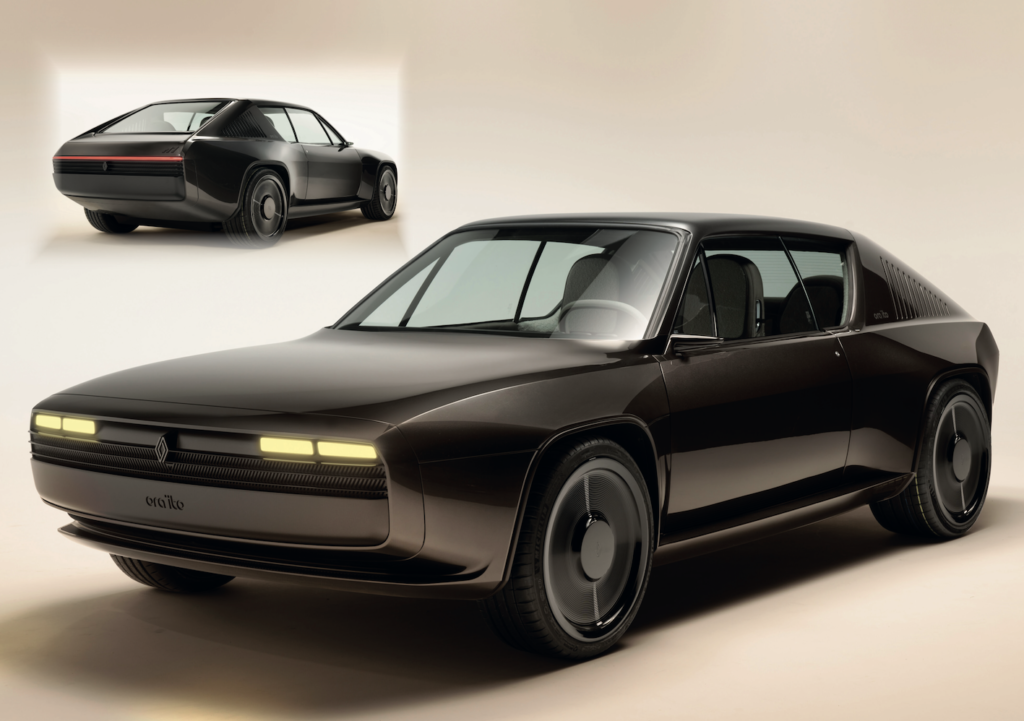
A surprise for you, but probably a little more…
It’s a surprise, but also something to be proud of! A surprise because the theme of the dynamic coupé is not really relevant in today’s world of crossovers… The car my father designed was far from being an SUV! It was also a surprise because the R17 had been somewhat forgotten. And I’m proud of it, because it goes back to a time when Renault was selling these coupes very well.
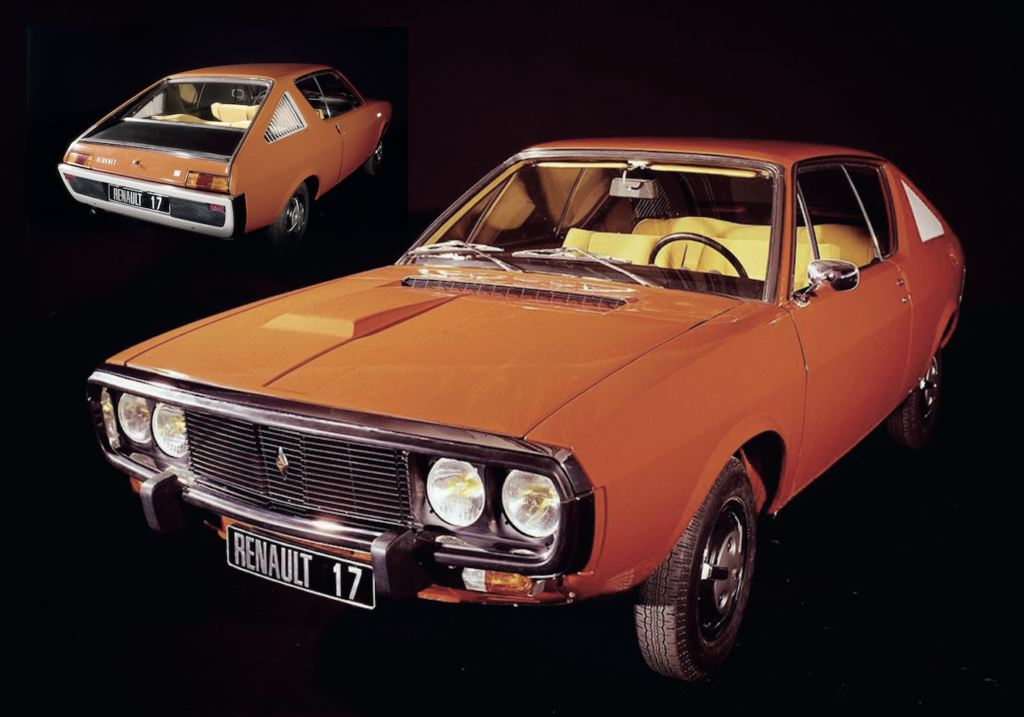
The R15/R17 duo (above, the R17) enjoyed a successful commercial career. These cars, put into their 1970s context, were dream cars. The styling of the 15 and 17 had no ‘B’ pillars, and you could have a sunroof. Not to mention the TS and even Gordini versions, the latter of which had a sporting career in rallying. This 2024 concept finally helps us rediscover the 1971 original!
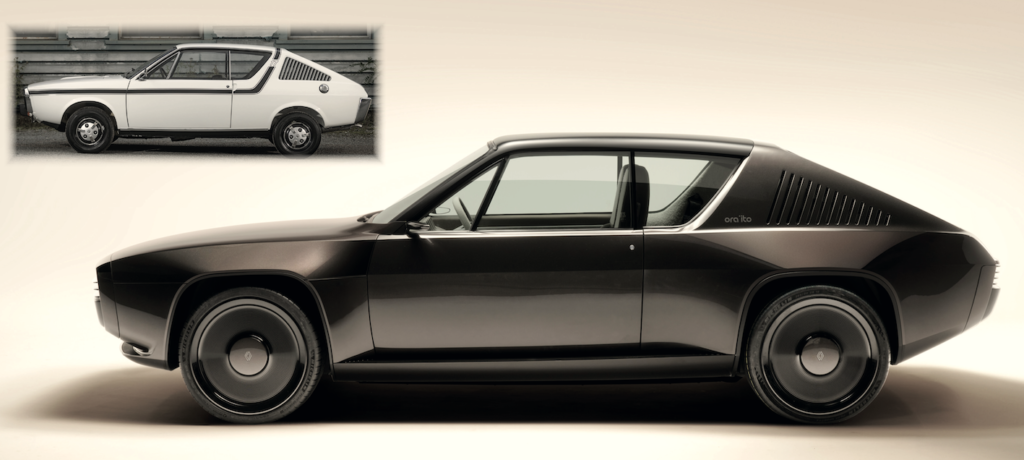
In the book you wrote using your father’s archives, you talk about your first experience in the R16, when you were 5 years old. Do you have any childhood memories of the 17?
‘’I remember the R16, even though I was 5 years old: it came in a special colour, a blue that was never offered in series production! We had every conceivable variation of the Renault 16 at home. After that, we drove a Renault 15 TS for almost a year, and paradoxically, with the family and the three children, including two teenagers, and with the luggage, things went really well! It was in metallic blue with beige seats. It had 90 bhp and it was already going well!
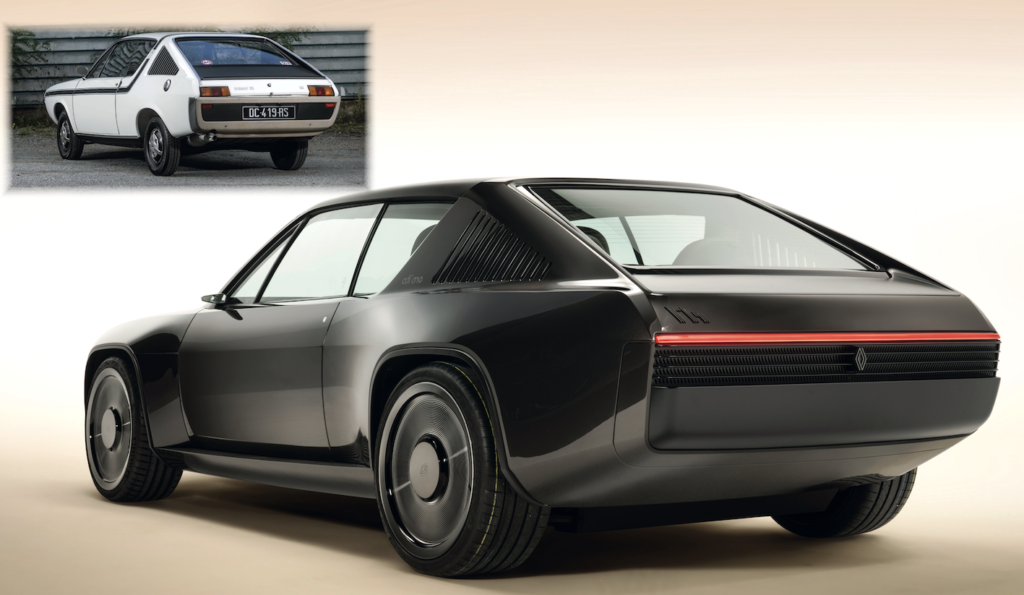
Did your father, who designed all three of Renault’s successes over the three decades of his career (the R16 in 1965, the R17 in 1971 and the R25 in 1984), like the 17 more than any other?
’It’s difficult to establish a hierarchy between the different models that he personally designed, but he was happy with the genesis of what became the 17 and the 15. With a bold style, he succeeded in combining a family coupé with a sporty car that was very popular with the public. I seem to remember just one regret on his part, which is the regret of all the designers of that period: the car was based on the R12 and he would have liked it to have wider tracks.
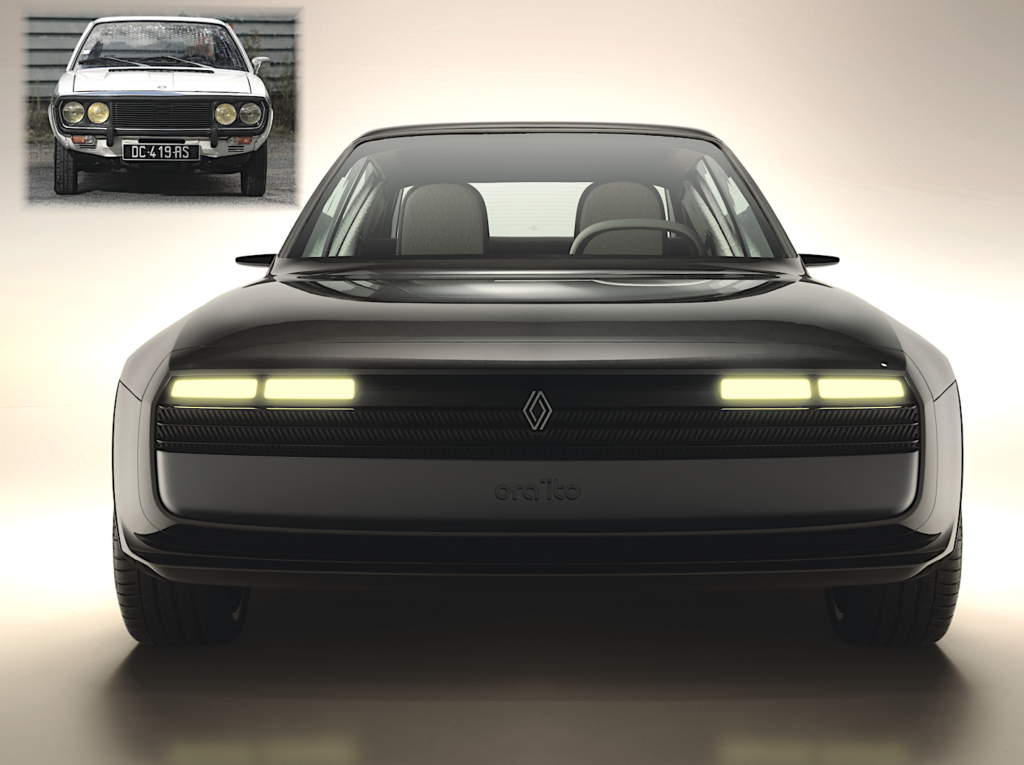
This is precisely the concept’s major architectural change: the wheels are where they should be with a 17 cm widening!
The widening of the original car is spectacular, but I’m a little more critical of the front end. By replacing the round headlights and the characteristic shape of the grille with slim headlights, the volume is pulled upwards and in terms of proportions, it distorts the moose. I feel the same way about the rear, with its flared shape that’s a little too tight… The shields are missing, even if they appear in filigree. But there are some very nice developments, such as the interpretation of the side louvres (below). As for the sides, there’s nothing to complain about, as they are those of the original.
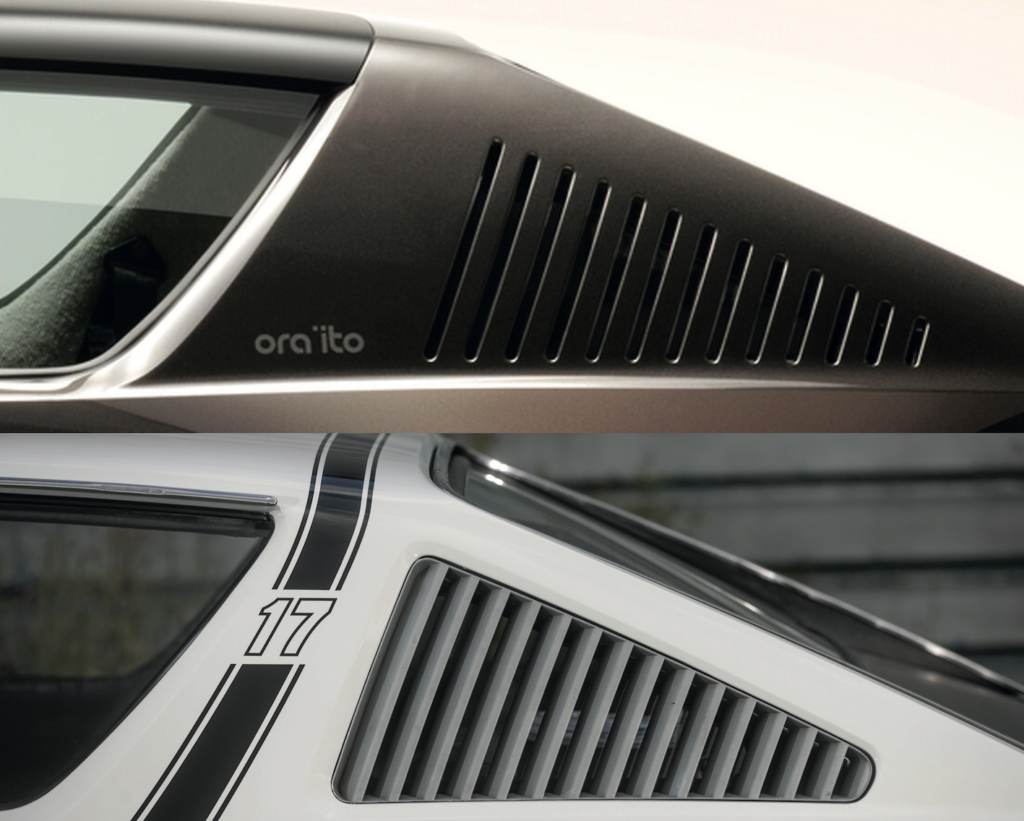
I’m also surprised by the front end of this restomodR17 , especially as the round headlights of the original R4, for example, have been perfectly treated on the new R4 E-TECH of 2024… And what do you think of the interior of Ora Ïto’s R17?
‘’Inside, there’s a very nice evocation of the petal seats (below) that appeared on the 1976 restyling. It’s a very nice touch. If I’d been working on the project, I would have played with the rounded shape of the instrument caps rather than the square shape, but that’s all a matter of personal taste… I’m not too keen on the plush feel of the upholstery, but it’s true that it evokes the 70s. I think the theme of the original concept of a very distinctive and innovative interior in the first generation R17 lends itself to fairly modern interpretations.
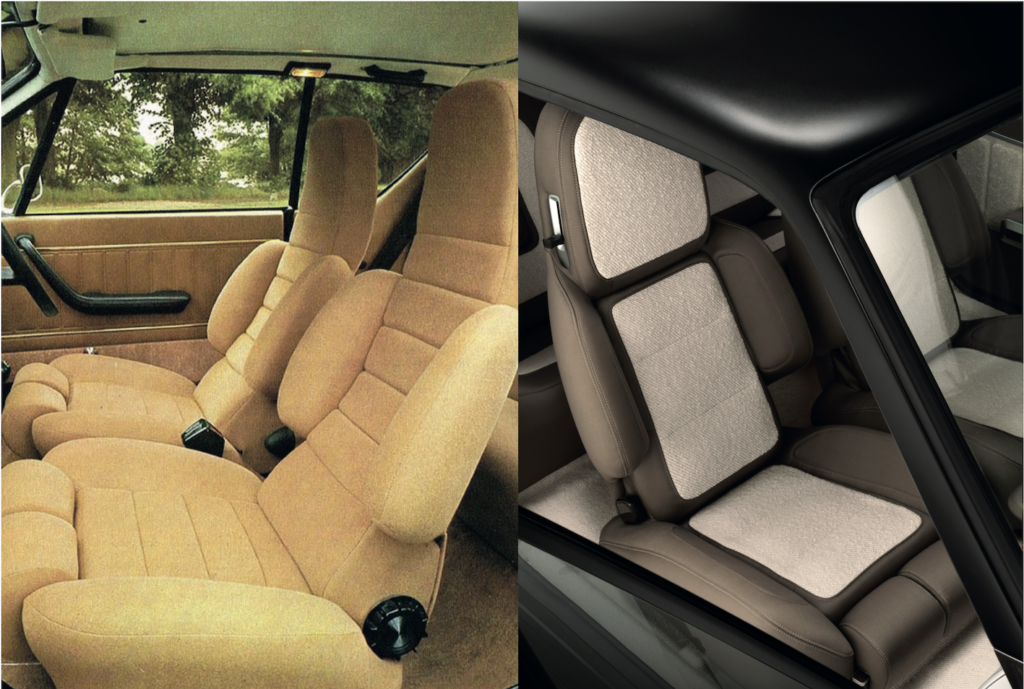
Does the Renault 17 bring back memories for you?
Yes, absolutely, I remember a time when I was a trainee in the French advertising department. It was 1980 and we were launching the Fuego, the replacement for the 15 and 17. We were doing test drives with company executives and there was a Fuego and rivals like the Toyota Celica, but there was also an R17. I found it very interesting to drive the 17 and a Fuego in sports mode, because I realised that the 17 still had some very good leftovers! We were driving very hard with the fuel-injected version.
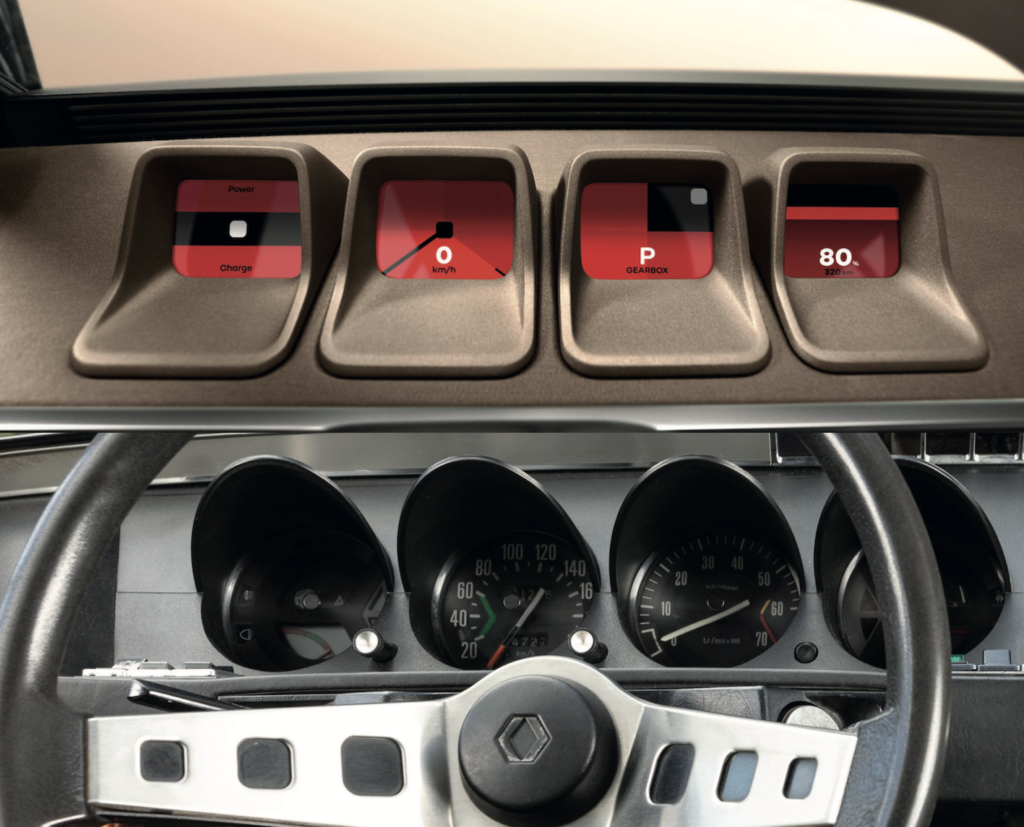
But it’s the R17 that’s coming out in 2024, not the Fuego!
Yes, and you have to wonder why Renault chose the R17 rather than the Fuego. For a long time, I drove a GTX automatic version of the Fuego, with a nui blue metallic grey interior. I drove it several thousand kilometres. It was derived from a saloon platform – the 18 – just as the 17 was derived from the 12, but some people gave it a rather old-fashioned image.
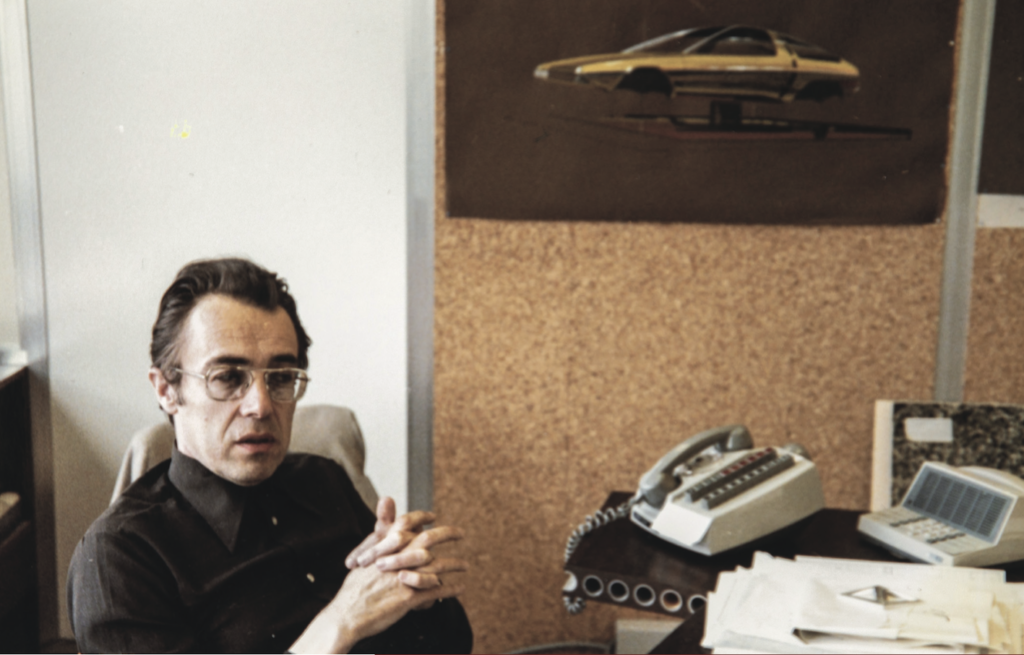
The world of collecting has changed its mind a little with this car. It’s now one of the youngtimers!
Yes, because in terms of design, the Fuego (designed by Michel Jardin) was beautifully proportioned and rather well made, but it lacked sportier engines. It deserved more. And to come back to Ora Ïto’s R17, on the whole it’s very positive, even if we know that it’s a one-shot and won’t be produced.‘’

BONUS 1
Unpublished: here’s the first drawing that inspired the Renault 17
Gaston Juchet sketches this study dated 1967. It paved the way for what would become the Renault 17 in 1971. It’s not a preliminary design: the drawing is signed by the head of styling, who specifies that it’s ‘’a free study‘’.

What does this drawing tell us? We notice that the Renault styling boss always adds an architectural or aeronautical touch to his backgrounds. This cabriolet has 2+2 seats and its body side features the louvres of the future R17 coupé. Finally, it is interesting to note that three years before Robert Opron and Jean Giret’s Citroën SM, a glass roof appeared on the bow. Although Juchet was ahead of Opron on this theme, he did use a rear wheel arch inspired by that of a Citroën!
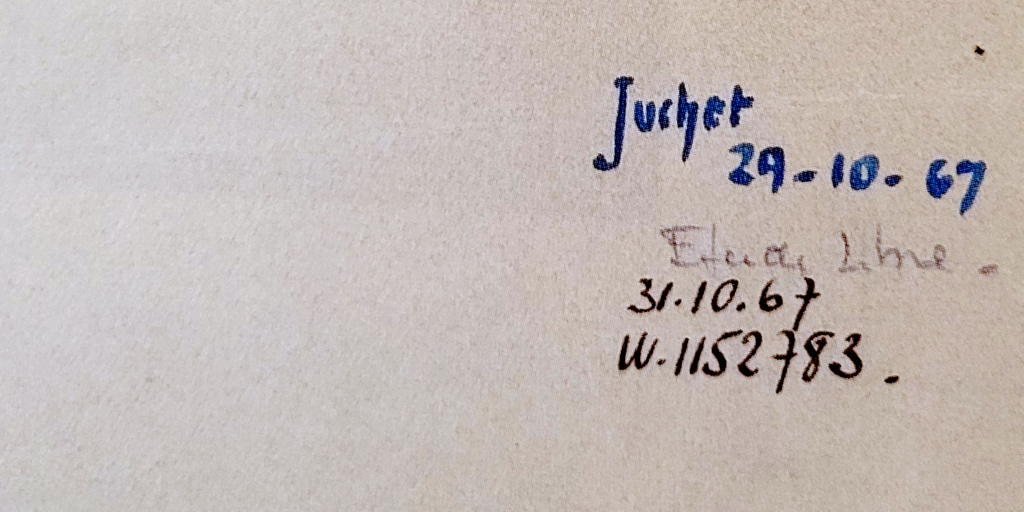
To put this painting in context, a month later, the first model of project 122 of the R5 (marketed in 1972) was produced. At the time, Gaston Juchet was in a period of transition, between the project for a sports coupé called RAG (for Renault Alpine Gordini) and what would become project 117P (then 131) of the future R17. Clearly, the RAG coupé-cabriolet, which had only two seats, was not suitable for the range, but it was nonetheless crucial in Renault’s history, since it would lead to two distinct projects: the Alpine A310, and the R15/17 duo.
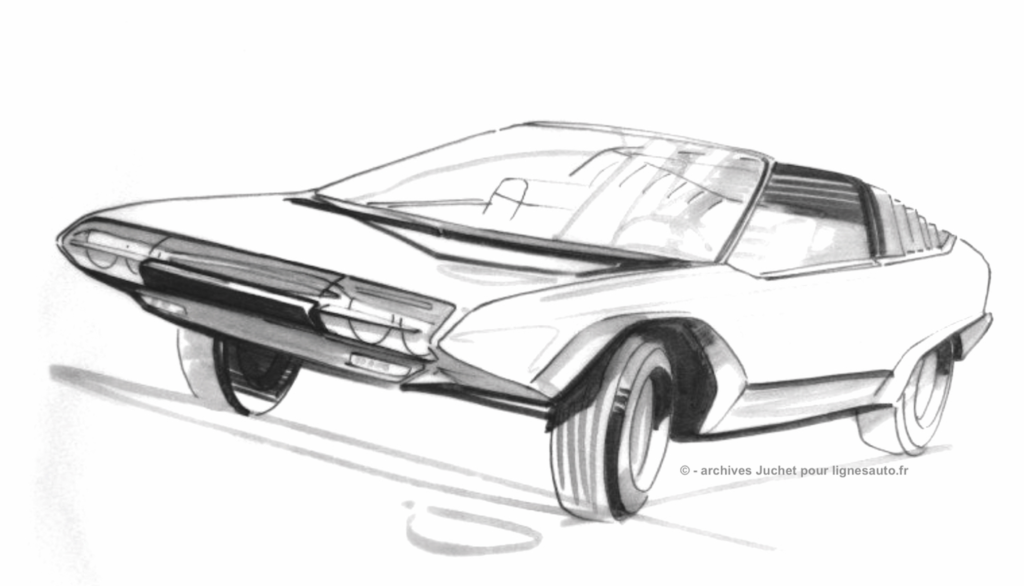
Gaston Juchet’s work is always divided into two stages, with a quick line sketch on the tracing paper above, followed by realistic painting. This free study is the undeniable link between the 1966 RAG programme and the R15/17 programme, which Gaston Juchet supervised. Michel Beligond was to take charge of the project, which culminated in the Alpine A310 2+2 seater in 1971, the same year as the two Renault coupés, the 15 and 17. Below is another painting, this time from 1968 and very close to the final product, apart from the radiator grille.
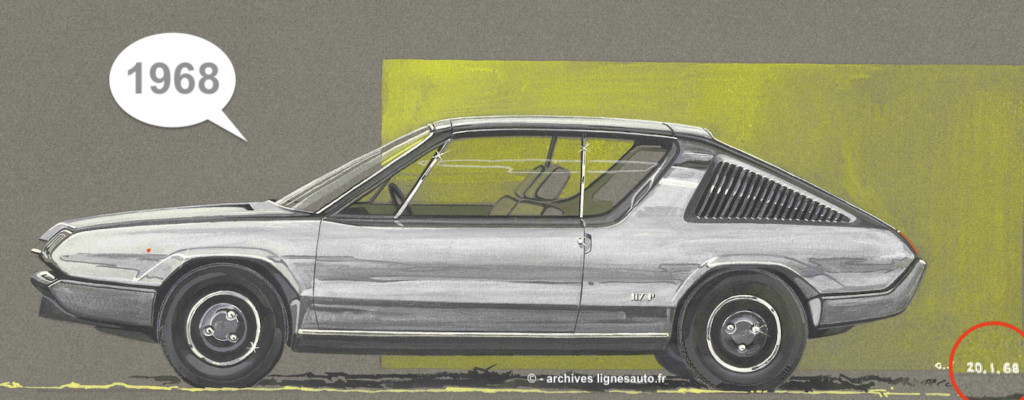
BONUS 2
1961: Gaston Juchet’s incredibly innovative proposal
LIGNES/auto takes a closer look at this painting by Gaston Juchet (below) dated August 1961. Renault had recently launched its R3/R4 duo on the market, and in the design office, Project 114 for a three-box saloon to replace the 1950 Frégate was in trouble. The young Gaston Juchet and a group of engineers also in their thirties were to revolutionise the stylistic and technical architecture of future Renault cars. This advanced study looks like a Renault 16, but it’s not a Renault 16. Its styling is a pure hatchback (2) which retains a long, flat roof, without the welded side panel/side panel system. The cabin is plush, with thick, comfortable upholstery right down to the dashboard (1).
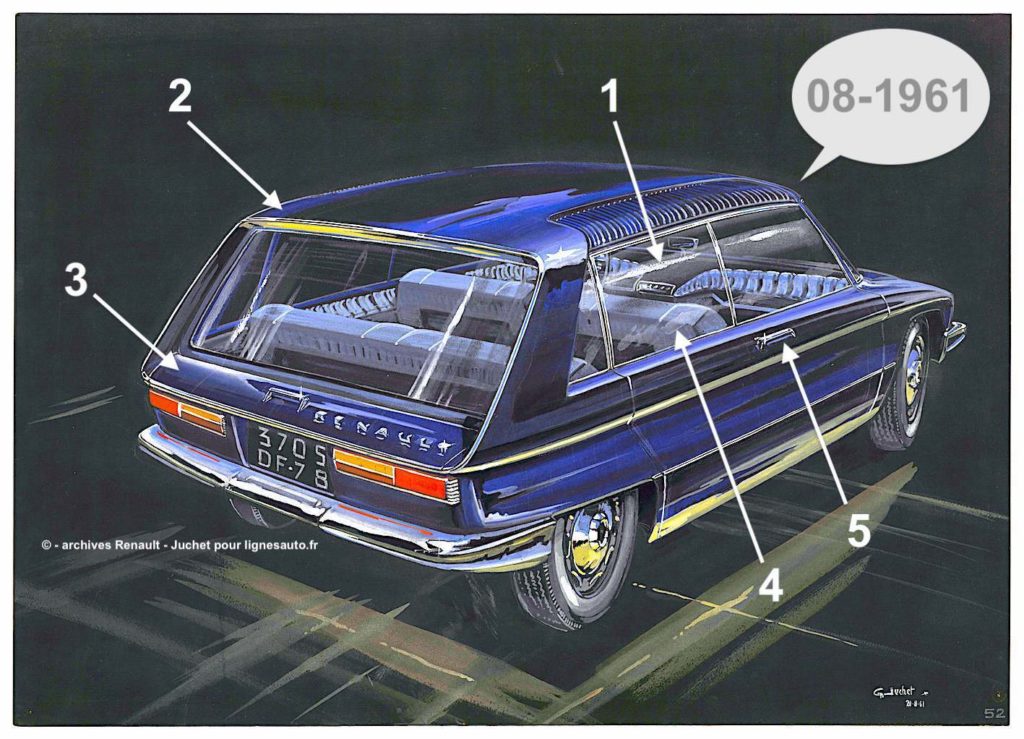
Unlike the R16, the tailgate edge is very limited (3) and hollowed out, like the one that would be found ten years later on the R15/17 and in 1975 on the R30/20. The glazed area (4) is exceptionally large. It comes from an architecture without a B-pillar, with a single, very long door with a central handle. The top of the roof features a grooved ‘cover’ to conceal the hinge system of a door that is probably a butterfly door but can also be folded open. Gaston Juchet carried out countless studies on opening systems (particularly asymmetrical ones) and in the field of architecture. In this sense, he can be considered not as a stylist, but as a true designer.
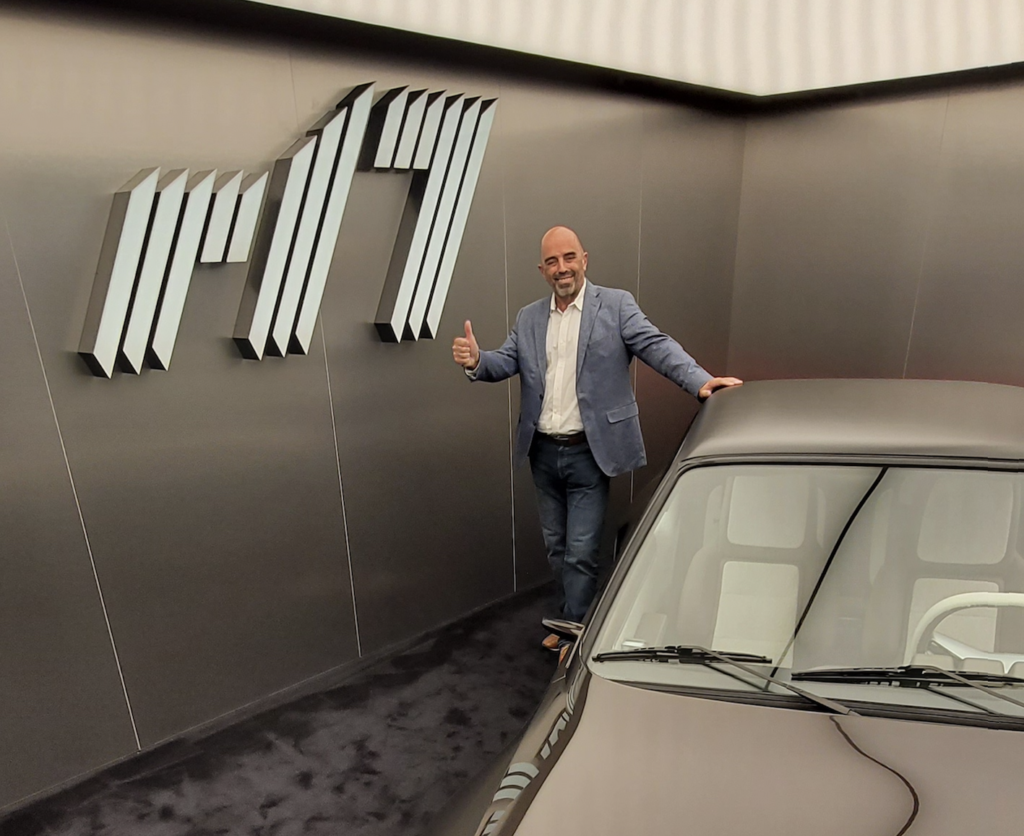
Thank you to Artcurial for the documents of the white Renault 17, to Jean-Michel Juchet for his availability, and to Sandeep Bhambra for the photo at the beginning of this article.

